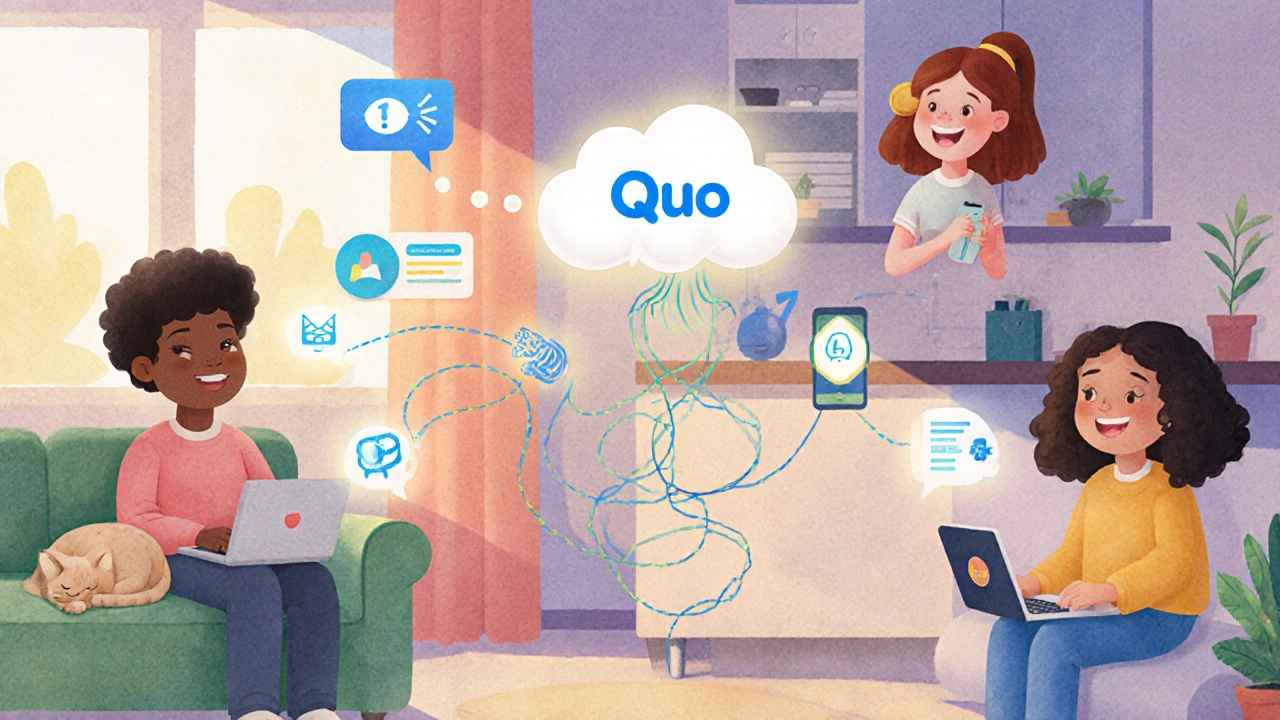Business Texting App: How SMS, VoIP, and Team Tools Work Together
When you think of a business texting app, a tool that lets teams send and receive text messages directly from their work phones or computers, often integrated with phone systems and CRM platforms. Also known as business SMS platform, it’s not just about sending quick replies—it’s about connecting sales, support, and operations through a single channel that customers already use. Most small businesses still rely on personal phones for customer texts, but that’s messy, insecure, and hard to track. A real business texting app lets you assign numbers to teams, log every message, tag conversations by outcome, and even sync texts with your VoIP calls—all without handing out your personal number.
It’s not just about texting. These apps work best when they’re tied to your VoIP system, a phone system that runs over the internet, replacing traditional landlines with digital calls and messaging features. IP telephony lets you send texts from the same interface where you make calls, view call logs, and manage voicemails. That’s why tools like Microsoft Teams and Google Voice are popular—they bundle calling, texting, and collaboration. But free versions often limit message volume, lack compliance features, or don’t let you assign dedicated business numbers. If you’re recording calls for call recording compliance, the legal and technical process of storing and managing phone conversations to meet regulations like HIPAA, TCPA, or GDPR. call logging, you need texting to be logged too. A good business texting app keeps every text tied to a customer record, just like a call tag in your VoIP system.
Think about how your team uses it. Sales reps need to follow up fast after a call. Support teams need to handle dozens of texts at once without mixing up customers. Managers need to see which messages led to sales, which got ignored, and which triggered complaints. That’s where call tagging, the practice of labeling calls and messages with outcome codes like "Sale Closed," "Follow Up Needed," or "Complaint Logged" to improve team performance and reporting. VoIP dispositions comes in. If your texting app doesn’t let you tag messages the same way you tag calls, you’re losing visibility. You’re guessing what worked. And in a business where every second counts, guessing costs money.
You don’t need fancy AI or robotic auto-replies to make this work. What you need is clarity: one place to send texts, track replies, and tie them to customer history. Whether you’re a clinic handling appointment reminders, a retail store answering product questions, or a remote team managing clients across time zones, the goal is the same—get to the point, stay professional, and keep a record. The best tools don’t just send texts. They connect them to your calls, your CRM, and your team’s workflow.
Below, you’ll find real guides on how to set this up without overpaying, how to avoid common compliance traps, and which tools actually work for teams like yours. No fluff. Just what you need to make texting a real part of your business phone system.
